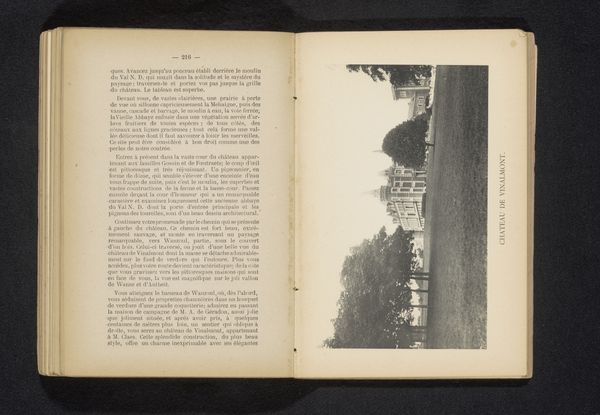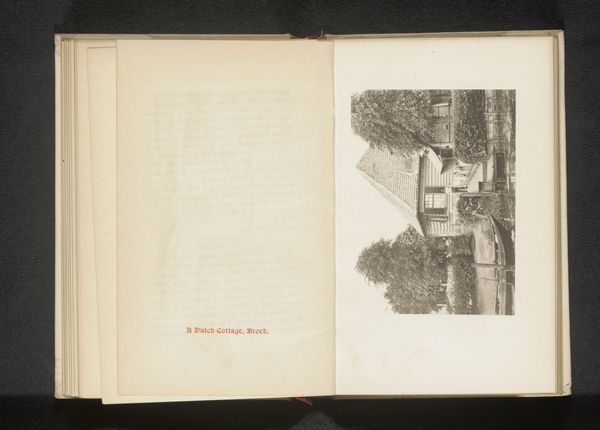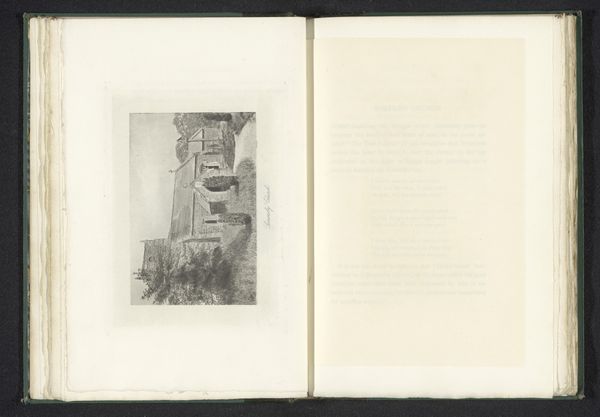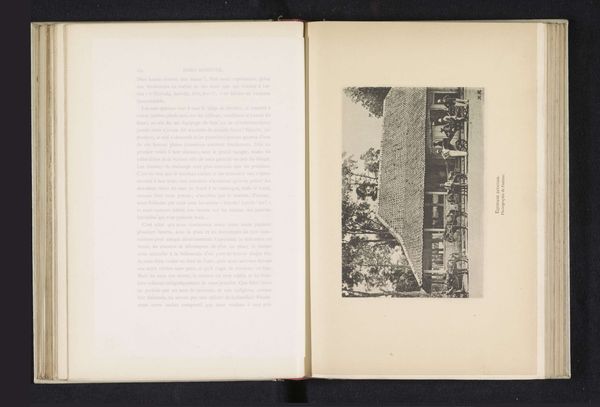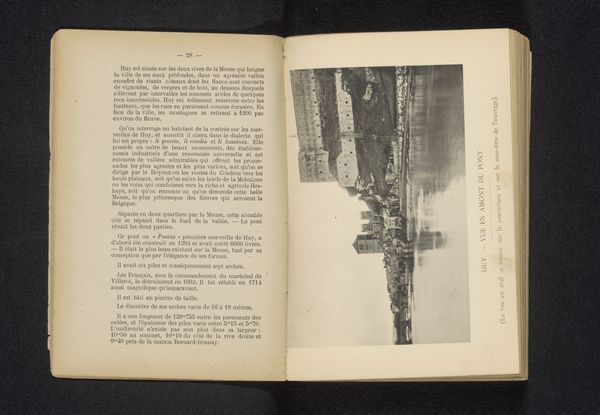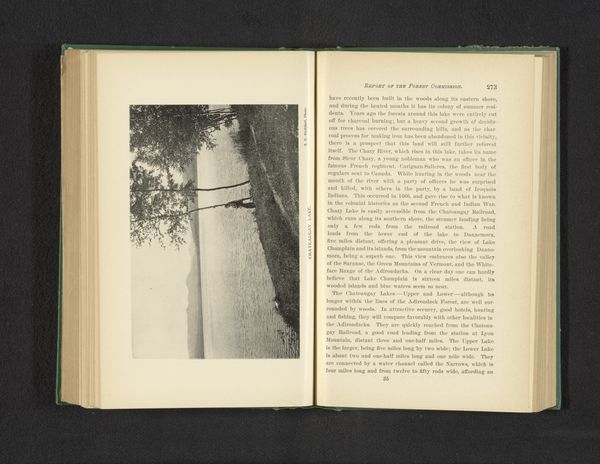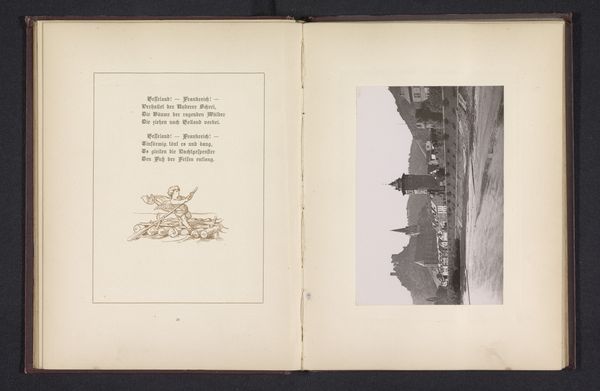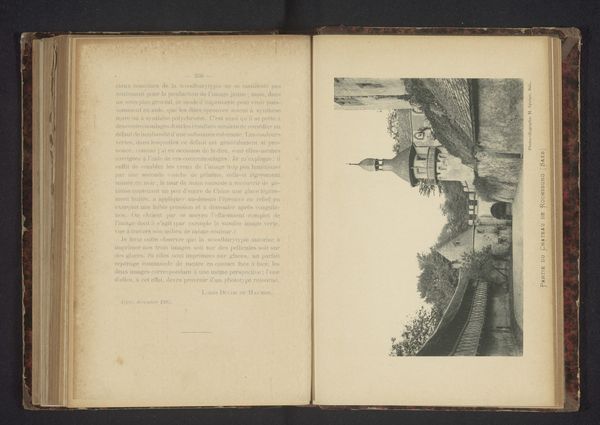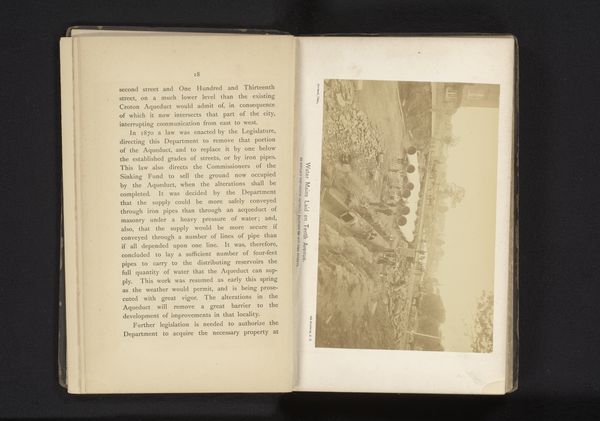
print, photography
# print
#
landscape
#
river
#
photography
Dimensions: height 115 mm, width 190 mm
Copyright: Rijks Museum: Open Domain
Editor: This is "Rivierlandschap met schuit in Vlaanderen," or "River Landscape with Boat in Flanders," before 1888, by Hypolitus Vermeersch-Adet. It’s a black and white print in a book. It has this very serene quality, doesn't it? I wonder, what strikes you most when you look at this work? Curator: I'm drawn to the stark contrast between the depicted pastoral scene and the likely industrialized context of its production. The print itself is a manufactured object, born from specific technologies and a division of labor. Was this image intended to evoke nostalgia for a disappearing way of life as industrialization expanded? Editor: That's an interesting point. I was focusing on the scene itself - the boat, the river. But thinking about it as a manufactured image changes things. So you see it as a commentary on industrialization, by virtue of its being a manufactured object? Curator: Precisely. We should also consider the act of consumption. This print exists within a book, a commodity intended for a specific audience. Who was consuming these images, and what did they hope to gain from them? A romantic escape from their daily routines or a reinforcement of existing social hierarchies? Editor: I hadn’t really thought about it like that before. It puts the image in a completely different context! Curator: It's about acknowledging the materials, processes, and social forces intertwined with even the seemingly simplest images. What else does noticing that change for you, looking at it now? Editor: It really does make me think more about who this was intended for, how the production impacted the imagery, and how all those elements worked together to affect the reception. Thank you. Curator: Indeed! By analyzing the material conditions surrounding art, we move beyond mere aesthetic appreciation towards a deeper understanding of its role in shaping society.
Comments
No comments
Be the first to comment and join the conversation on the ultimate creative platform.
